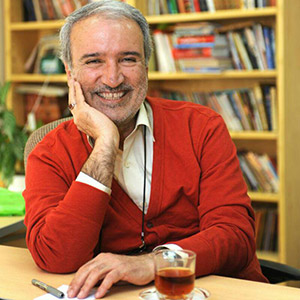A Bullet Wasn’t Able to Cope With Life
Morteza Sarhangi, the Manager in Charge of Iranian Oral History Website
Translated by: Fazel Shirzad
2018-4-25

There is no bullet made to be able to cope with life yet. The love of life reduces the fire of war. It belittles the war. Although, the war captures the youth of women, the life of men, and the childhood of children, but the light of life even remains under collapsed ceilings; alight the path of life. The stability of living in any possible form is a formal statement from humans to owners of bullets. The war comes to capture life, but the humans are those who not only appease to the forces of life, but also they are tied up with life days and pushed them forward in the toughest conditions of life. If humans wanted to cope with the forces of life, they will move from a city to another city with his belongings on back of a bike as much as possible.
For us, as we are far from the war frontiers for thousands of kilometers, these are photos that tell us what were happened to the humans. The photos are like informants during the war, and they become a strong document after the war that nobody can resist against them. There is no any friend for warlike photos except the humans; just like war literature that is most popular literature being read in the world. The world wants to know how some people, who are also humans as other people of world, lived in the heart of the war of fire, and even they had been captured and prisoned in horrific concentration camp for some years. War is a human-made phenomenon, and that is the problem of war; the humans love life, even if they are not equipped and are under threat of bullets and missiles. The humans don’t leave life, or stay and just look at it.
Human society should be congratulated for the failure of powerful world in making bullets which are not able to cope with human life; therefore, it is a ceremony that soften the steely stability of the humans, and pass over them to continue their life as a bounty from God.
Number of Visits: 4935








The latest
Most visited
- Third Regiment: Memoirs of an Iraqi Prisoner of War Doctor – 4
- From Nowhere-Land to Utopia
- Comparing the Narratives of Commanders and Ordinary Combatants in the Sacred Defense
- An Sooye Divar (Beyond the Wall)
- Unveiling of the book: “Oral History: What and Why” — Report 2 (Final)
- 100 Questions/ 4
- Third Regiment: Memoirs of an Iraqi Prisoner of War Doctor – 5
- Challenges of Interviewing in Oral History
Mohammad — The Messiah of Kurdistan
Boroujerdi immediately said to Darvish, “Ready a few men; we’re going.” Then he moved toward Mostafa, who was studying the Kurdistan map. Mostafa straightened his back and said, “During my service in the army I experienced a full-scale war in Kurdistan. Guerrilla warfare in Kurdistan follows its own rules. The anti-revolutionary commanders want to draw us into a battle chosen on their terms.”From Javanrud to Piranshahr
The Memoir of Reza MohammadiniaThe book From Javanrud to Piranshahr recounts the life and struggles of Commander Reza Mohammadinia, who spent part of the Iran–Iraq War in the western and northwestern regions of the country. During those years, he held responsibilities such as deputy commander of the Seventh Region of the Islamic Revolutionary Guard Corps (IRGC), acting head of the Javanrud district, service on the southern fronts, director of ...
Tactical and Strategic Analysis and Limitations
The present paper, entitled “A Critical and Scholarly Study of Dr. Hossein Alaei’s Two-Volume Book: Tactical and Strategic Analysis and Limitations”, is a research work that examines and evaluates the two-volume book “An Analytical History of the Iran-Iraq War”. In this study, the strengths and weaknesses of the work are analyzed from the perspectives of content critique, methodology, and sources.

